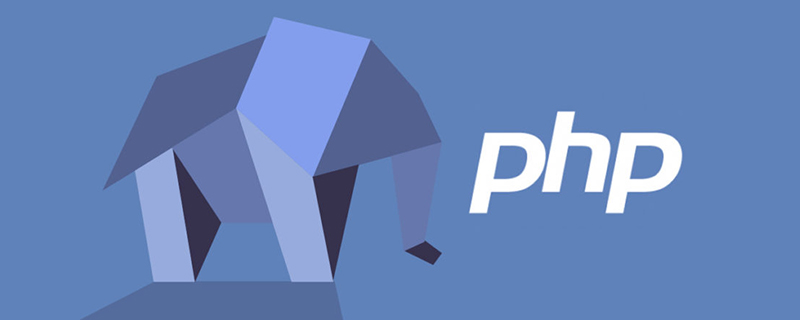一文了解PHP中的享元模式
- 青灯夜游轉載
- 2021-07-14 19:32:553015瀏覽
在之前的文章《聊聊PHP中的代理模式(正向代理與反向代理)》中我們介紹了PHP中的代理模式,以下這篇文章帶大家了解一下PHP設計模式中的享元模式。

享元模式,「享元」這兩個字在中文裡其實並沒有什麼特殊的意思,所以我們要把它拆分來看。 「享」就是共享,「元」就是元素,這樣一來似乎就很容易理解了,共享某些元素嘛。
Gof類別圖及解釋
GoF定義:運用共享技術有效支援大量細粒度的物件
GoF類別圖

#程式碼實作
interface Flyweight
{
public function operation($extrinsicState) : void;
}
class ConcreteFlyweight implements Flyweight
{
private $intrinsicState = 101;
function operation($extrinsicState) : void
{
echo '共享享元对象' . ($extrinsicState + $this->intrinsicState) . PHP_EOL;
}
}
class UnsharedConcreteFlyweight implements Flyweight
{
private $allState = 1000;
public function operation($extrinsicState) : void
{
echo '非共享享元对象:' . ($extrinsicState + $this->allState) . PHP_EOL;
}
}定義共用介面以及它的實現,注意這裡有兩個實現,ConcreteFlyweigh進行狀態的共享,UnsharedConcreteFlyweight不共享或者說他的狀態不需要去共享
class FlyweightFactory
{
private $flyweights = [];
public function getFlyweight($key) : Flyweight
{
if (!array_key_exists($key, $this->flyweights)) {
$this->flyweights[$key] = new ConcreteFlyweight();
}
return $this->flyweights[$key];
}
}保存那些需要共享的對象,做為一個工廠來創建需要的共享對象,保證相同的鍵值下只會有唯一的對象,節省相同對象創建的開銷
$factory = new FlyweightFactory(); $extrinsicState = 100; $flA = $factory->getFlyweight('a'); $flA->operation(--$extrinsicState); $flB = $factory->getFlyweight('b'); $flB->operation(--$extrinsicState); $flC = $factory->getFlyweight('c'); $flC->operation(--$extrinsicState); $flD = new UnsharedConcreteFlyweight(); $flD->operation(--$extrinsicState);
客戶端的調用,讓外部狀態$extrinsicState能夠在各個對象之間共享
- #有點意思吧,這個模式的程式碼量可不算少
- 當一個應用程式使用了大量非常相似的對象,對象的大多數狀都可變為外部狀態時,很適合享元模式
- 這裡的工廠是儲存物件清單的,不是像工廠方法或抽象工廠一樣去創建物件的,雖說這裡也進行了創建,但如果物件存在,則會直接返回,而且清單也是一直維護的
- 享元模式在現實中,大家多少一定用過,各種池技術就是它的典型應用:線程池、連接池等等,另外兩個一樣的字符串String類型在php或Java中都是可以===的,這也運用到了享元模式,它們連內存地址都是一樣的,這不就是一種共享嘛
- 關於享元模式,有一個極其經典的例子,比我下面的例子要好的多,那就是關於圍棋的棋盤。圍棋只有黑白兩色,所以兩個物件就夠了,接下來呢?改變他們的位置狀態就好啦!有興趣的朋友可以搜搜哈!
- Laravel中的IoC容器可以看作是一種享元模式的實作。它把物件保存在陣列中,在需要的時候透過閉包機制進行取用,也有一些類別有共享一些狀態屬性的內容。大家可以翻閱代碼了解了解。
還是說到科技以換殼為本這件事上。畢竟,大家都還是喜歡各種顏色的手機來展現自己的個性。之前說過,如果每種顏色我們都要做一條生產線的話那豈不是一項巨大的投入。還好,每個型號我們的工廠(享元工廠)只生產最基本的背景殼(物件),然後透過專門的印刷線(狀態變化)來進行上色不就好啦!嗯,下一款Iphone早晚也會模仿我們的,看來我們得先把各種金、各種土豪色集齊才行,說不定還能召喚神龍呢! !
完整程式碼:https://github.com/zhangyue0503/designpatterns-php/blob/master/13.flyweights/source/flyweights.php
#實例
果然不出意外的我們還是來發短信,這回的短信依然使用的阿里雲和極光短信來進行發送,不過這次我們使用享元模式來實現,這裡的享元工廠我們保存了兩種不同類型的物件哦,透過內外狀態來讓它們千變萬化吧!
簡訊發送類別圖

#完整原始碼:https://github.com/zhangyue0503/designpatterns-php /blob/master/13.flyweights/source/flyweights-message.php
<?php
interface Message
{
public function send(User $user);
}
class AliYunMessage implements Message
{
private $template;
public function __construct($template)
{
$this->template = $template;
}
public function send(User $user)
{
echo '使用阿里云短信向' . $user->GetName() . '发送:';
echo $this->template->GetTemplate(), PHP_EOL;
}
}
class JiGuangMessage implements Message
{
private $template;
public function __construct($template)
{
$this->template = $template;
}
public function send(User $user)
{
echo '使用极光短信向' . $user->GetName() . '发送:';
echo $this->template->GetTemplate(), PHP_EOL;
}
}
class MessageFactory
{
private $messages = [];
public function GetMessage(Template $template, $type = 'ali')
{
$key = md5($template->GetTemplate() . $type);
if (!key_exists($key, $this->messages)) {
if ($type == 'ali') {
$this->messages[$key] = new AliYunMessage($template);
} else {
$this->messages[$key] = new JiGuangMessage($template);
}
}
return $this->messages[$key];
}
public function GetMessageCount()
{
echo count($this->messages);
}
}
class User
{
public $name;
public function GetName()
{
return $this->name;
}
}
class Template
{
public $template;
public function GetTemplate()
{
return $this->template;
}
}
// 内部状态
$t1 = new Template();
$t1->template = '模板1,不错哟!';
$t2 = new Template();
$t2->template = '模板2,还好啦!';
// 外部状态
$u1 = new User();
$u1->name = '张三';
$u2 = new User();
$u2->name = '李四';
$u3 = new User();
$u3->name = '王五';
$u4 = new User();
$u4->name = '赵六';
$u5 = new User();
$u5->name = '田七';
// 享元工厂
$factory = new MessageFactory();
// 阿里云发送
$m1 = $factory->GetMessage($t1);
$m1->send($u1);
$m2 = $factory->GetMessage($t1);
$m2->send($u2);
echo $factory->GetMessageCount(), PHP_EOL; // 1
$m3 = $factory->GetMessage($t2);
$m3->send($u2);
$m4 = $factory->GetMessage($t2);
$m4->send($u3);
echo $factory->GetMessageCount(), PHP_EOL; // 2
$m5 = $factory->GetMessage($t1);
$m5->send($u4);
$m6 = $factory->GetMessage($t2);
$m6->send($u5);
echo $factory->GetMessageCount(), PHP_EOL; // 2
// 加入极光
$m1 = $factory->GetMessage($t1, 'jg');
$m1->send($u1);
$m2 = $factory->GetMessage($t1);
$m2->send($u2);
echo $factory->GetMessageCount(), PHP_EOL; // 3
$m3 = $factory->GetMessage($t2);
$m3->send($u2);
$m4 = $factory->GetMessage($t2, 'jg');
$m4->send($u3);
echo $factory->GetMessageCount(), PHP_EOL; // 4
$m5 = $factory->GetMessage($t1, 'jg');
$m5->send($u4);
$m6 = $factory->GetMessage($t2, 'jg');
$m6->send($u5);
echo $factory->GetMessageCount(), PHP_EOL; // 4說明
- 程式碼有點多吧,但其實一共是兩種類型的類,產生了四種物件。這裡每個類別不同的物件是根據模板來區分的
- 這樣的組合還是比較方便的吧,再結合別的模式將工廠這裡優化一下,嗯,前途不可限量,你們可以想想哦!
- 享元模式適用於系統中存在大量的相似物件以及需要緩衝池的場景,能夠降低記憶體佔用,提高效率,但會增加複雜度,需要分享內部和外部狀態
- #最主要的特點是有一個唯一標識,當記憶體中已經有這個對象了,直接回傳對象,不用再去創建了
原文位址:https://juejin.cn /post/6844903965814259726
作者:硬核心專案經理
推薦學習:《PHP影片教學》
以上是一文了解PHP中的享元模式的詳細內容。更多資訊請關注PHP中文網其他相關文章!

